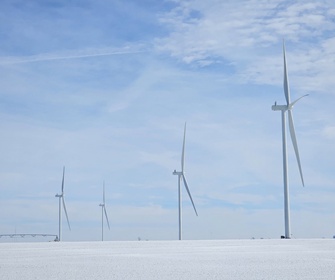 The offshore renewables sector is still set for stellar growth; how quickly it achieves this depends on its ability to make changes that unlock its potential. Looking at the headlines around the offshore wind market you could be convinced that the sky is falling in. Cancelled projects, installation overruns, revised auction models and above all higher supply chain costs are conspiring to suggest that the sector is in crisis. But this is an industry that could realistically grow fourfold by 2030 even if 50% of tabled projects are cancelled tomorrow and eightfold if they all proceed. There is still a huge amount to be positive about, but this does not mean that changes should not be made or improvements not encouraged. Here are five suggestions for how the sector can shake off its growing pains and emerge into maturity.
The offshore renewables sector is still set for stellar growth; how quickly it achieves this depends on its ability to make changes that unlock its potential. Looking at the headlines around the offshore wind market you could be convinced that the sky is falling in. Cancelled projects, installation overruns, revised auction models and above all higher supply chain costs are conspiring to suggest that the sector is in crisis. But this is an industry that could realistically grow fourfold by 2030 even if 50% of tabled projects are cancelled tomorrow and eightfold if they all proceed. There is still a huge amount to be positive about, but this does not mean that changes should not be made or improvements not encouraged. Here are five suggestions for how the sector can shake off its growing pains and emerge into maturity.By Alex Fyfe, Managing Director, Heavy Lift Projects, UK
More Transparency
Non-disclosure agreements are a standard component of business and everyone, ourselves included, abides by them. But is a mechanism that can hinder a service provider having conversations about project finance with their bank really contributing to moving the process forward?
Non-disclosure agreements are a standard component of business and everyone, ourselves included, abides by them. But is a mechanism that can hinder a service provider having conversations about project finance with their bank really contributing to moving the process forward?
Many vendors are operating under the equivalent of a super-injunction, with a code of silence covering every aspect of a contract. In a sector where auction bidding and a public desire for cleaner energy are pushing demand, more open discussions would speed up learning and solutions, driving cost savings and innovation.
Better Bidding
Seeking competitive bids from the market is also standard procedure, but collecting three bids does not guarantee that the chosen vendor can actually do the job well or for the price quoted. In some cases, vendors and supply chain managers may not speak once the bidding process has started; the lack of communication is unhealthy.
Seeking competitive bids from the market is also standard procedure, but collecting three bids does not guarantee that the chosen vendor can actually do the job well or for the price quoted. In some cases, vendors and supply chain managers may not speak once the bidding process has started; the lack of communication is unhealthy.
Often, the way specification or requirements are written, usually without enough detail, leaves too much margin for error or interpretation, leading, on occasion, to disingenuous bidding. Instead, if it was goal-based, the vendor could demonstrate exactly what solution they propose to meet the requirements.
Location, Location …
Installation projects are hampered by short-term project timescales. Developers often work on the assumption that they can install 60 to 70 foundations in a summer and the same in turbines the next year. This increases ancillary costs for workforce resources, rents and leases that would be lower if booked for longer.
Installation projects are hampered by short-term project timescales. Developers often work on the assumption that they can install 60 to 70 foundations in a summer and the same in turbines the next year. This increases ancillary costs for workforce resources, rents and leases that would be lower if booked for longer.
Thinking bigger and longer term, developers could also look to manage their operational risk by moving assets and personnel to fulfil projects in other locations, while conditions allow, or work with others to bring packages of work to their locations.
Equality of Opportunity
The evolution of wind farm projects is making investment in vessel assets more complicated and unbalanced. The decision to build a service operations vessel – or other offshore tonnage for this purpose – is an easy one given the 10-year maintenance contracts on offer.
The evolution of wind farm projects is making investment in vessel assets more complicated and unbalanced. The decision to build a service operations vessel – or other offshore tonnage for this purpose – is an easy one given the 10-year maintenance contracts on offer.
The decision to build a wind farm turbine installation vessel must be taken against the prospect of working at maximum capacity for six or seven months but potentially standing idle for the next six months until the project starts again. Finance models are not designed to support these short operational windows. The net effect is higher rates and reduced competition.
How Long Is Too Long?
This imbalance between investment decisions and asset employment reflects the tenure of contracts that developers are prepared to grant. The use of short-term contracts rather than long-term commitments stifles innovation and slows down the mass production and commodification needed to bring costs down and keep them there.
This imbalance between investment decisions and asset employment reflects the tenure of contracts that developers are prepared to grant. The use of short-term contracts rather than long-term commitments stifles innovation and slows down the mass production and commodification needed to bring costs down and keep them there.
The wind farm sector needs a degree of standardisation and automation that cannot be achieved by applying the techniques and approaches that have marked the first 20 years of development.
This uncertainty – not about demand but about the financial and operational risks – is likely to see more companies withdraw from the supply chain and possibly more projects get cancelled as exposure becomes unacceptable and investors in projects and the supply chain increasingly get cold feet.








